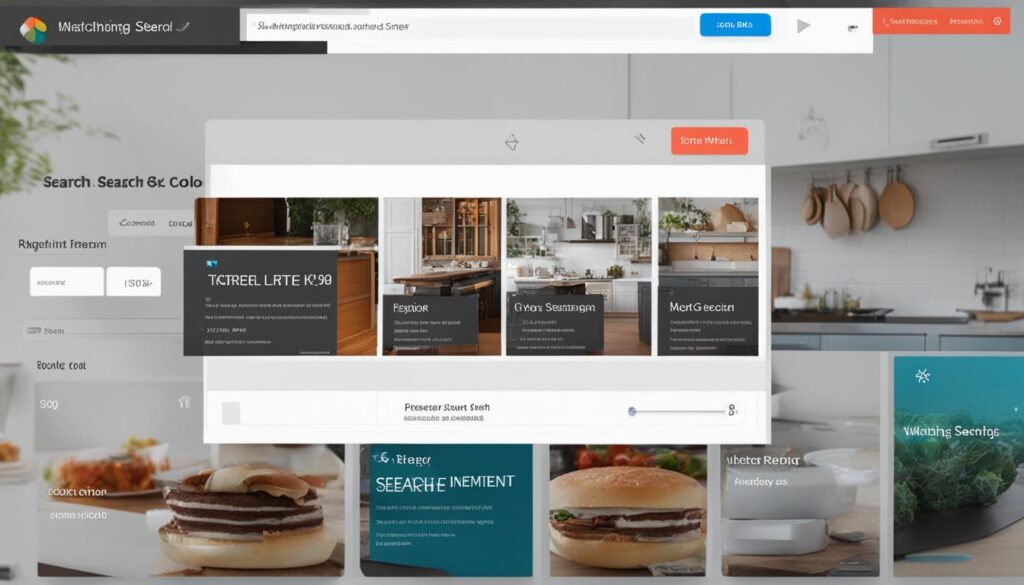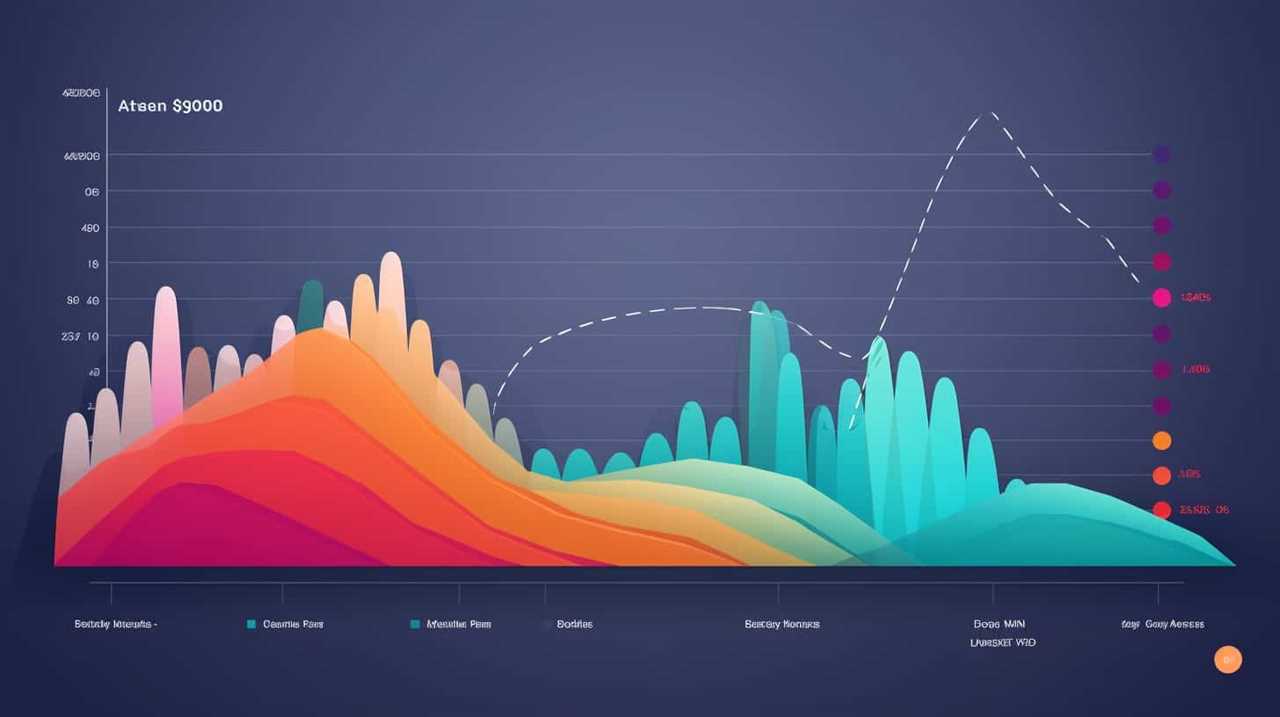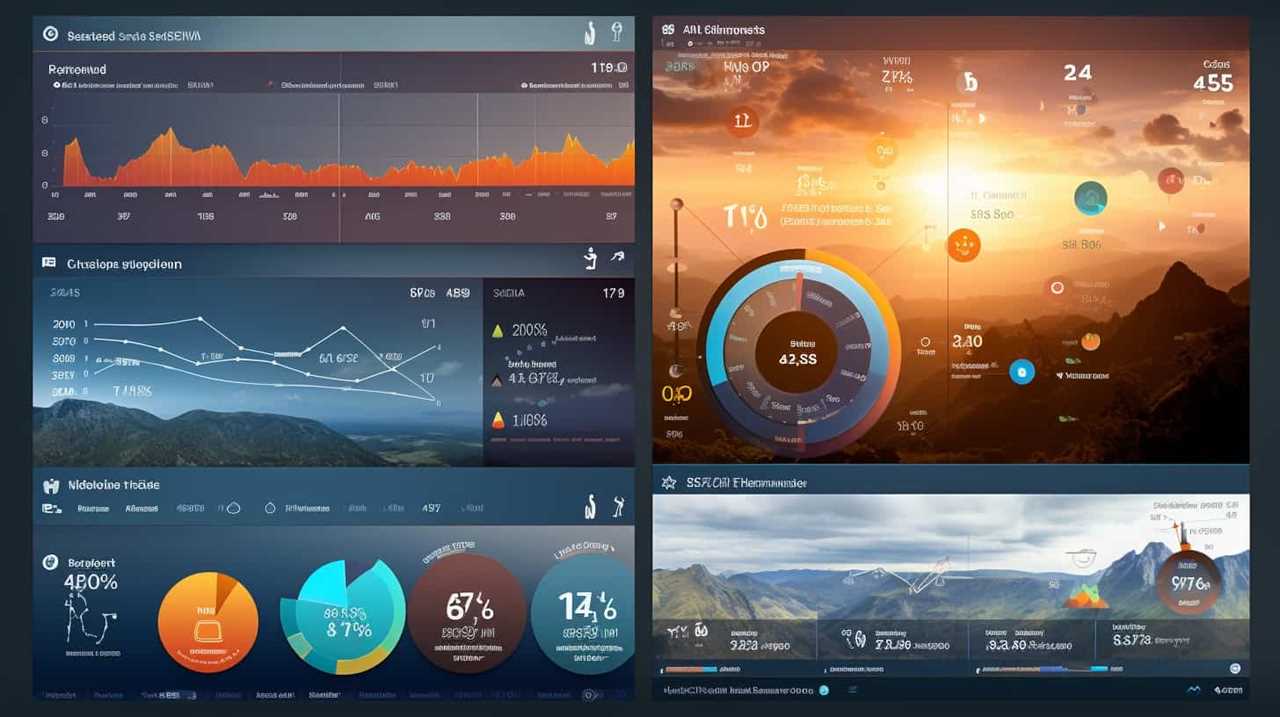Holistic SEO
Maximize Your SEO with Search Intent Matching Today

Within the field of search engine optimization (SEO), understanding and enhancing search intent matching can be incredibly impactful. By aligning your content with the exact searches that users are conducting, you can expect to see a notable increase in your search rankings and an enhancement in the user experience provided by your site.
Search intent matching refers to the process of optimizing your website to meet the specific intent behind users’ search queries. When you successfully match your content to their expectations, search engines take notice, resulting in higher rankings and increased organic traffic.
At its core, search intent matching is about creating content that directly addresses what users are looking for. By understanding the keywords and phrases that reflect user intent, you can optimize your website to provide the most relevant and valuable information.
Implementing search intent matching into your SEO strategy involves a deep understanding of keyword intent, user intent, and intent-driven search. By aligning your content with the search algorithms and ranking systems used by search engines, you can significantly improve your website’s visibility and attract the right audience.
Furthermore, search intent matching is essential for enhancing user experience. When users find exactly what they’re looking for on your website, they are more likely to engage with your content, stay longer on your site, and convert into customers or clients.
In this article, we will explore the importance of search intent matching for SEO, how to identify search intent, and strategies for optimizing your content to meet user expectations. By following these guidelines, you can take your SEO efforts to new heights and achieve long-term success.
Key Takeaways:
- Search intent matching is a crucial aspect of SEO strategy.
- Understanding user intent is key to creating relevant and valuable content.
- Matching search intent improves search rankings and enhances user experience.
- Keyword research tools can help identify different types of search intent.
- Think like your intended audience to optimize for search intent.
What is Search Intent?
Search intent, also known as user intent or keyword intent, refers to the reason behind a user’s online search query. It categorizes search queries into different types of intent: navigational intent, transactional intent, and informational intent. Navigational intent focuses on finding a specific website, transactional intent aims to make a purchase, and informational intent seeks to acquire knowledge. Understanding the different types of search intent is essential for optimizing content to meet users’ needs.
When users initiate an online query, they have a specific goal in mind. They may be looking for a solution to a problem, seeking knowledge, or intending to make a purchase. Search engines recognize these intents and strive to provide users with the most relevant results. By understanding search intent, you can create content that aligns with what users are searching for, increasing the chances of your website appearing in search results and attracting targeted traffic.
For example, let’s say a user types in the query “best smartphones under $500.” In this case, the search intent is transactional, as the user is looking to make a purchase. By understanding this intent, you can create content that showcases the top smartphones within the specified budget, providing the user with the information they need to make a decision. This alignment between search intent and content improves the overall user experience and increases the likelihood of the user engaging with your website.
Types of Search Intent:
| Intent Type | Description |
|---|---|
| Navigational Intent | Users are looking for a specific website or web page. They have a clear destination in mind. |
| Transactional Intent | Users intend to make a purchase or engage in a specific transaction, such as booking a hotel or buying a product. |
| Informational Intent | Users are seeking information or answers to their questions. They want to gain knowledge or solve a problem. |
Why is Search Intent Important for SEO?
Search intent plays a crucial role in the success of your SEO efforts. By understanding and aligning with users’ search intent, you can improve your search rankings, enhance user experience, and drive relevant organic traffic to your website. Here’s why search intent is important for SEO:
1. Improved Relevance and User Experience
When your website’s content matches users’ search intent, it becomes more relevant to their needs. By addressing their specific queries or problems, you create a positive user experience and increase the chances of engagement and conversions. Google’s search algorithms prioritize relevant content, so optimizing for search intent helps your website stand out in the search results.
2. Better Search Rankings
Search engines, like Google, aim to provide the most relevant results to users. By optimizing your content to match search intent, you increase the likelihood of ranking higher in search results. When your website consistently meets users’ search intent, search engines recognize it as a valuable resource and reward it with improved rankings.
3. Adapting to Google Updates
Google regularly updates its search algorithms to improve search results and user experience. Recent updates, like BERT (Bidirectional Encoder Representations from Transformers) and RankBrain, focus on understanding search intent better. By aligning your content with search intent, you adapt to these updates and position your website for success in the ever-evolving SEO landscape.
| Key Benefits of Search Intent Optimization |
|---|
| Higher search rankings |
| Increased organic traffic |
| Better user experience |
| Improved engagement and conversions |
| Adaptation to Google updates |
By focusing on search intent and optimizing your content accordingly, you can unlock the full potential of your SEO strategy. Meeting users’ search intent not only boosts your search rankings but also enhances the overall user experience on your website. Keep search intent at the forefront of your SEO efforts, and you’ll reap the rewards in terms of increased organic traffic and improved engagement.
How to Identify Search Intent
Identifying search intent is a crucial step in optimizing content for search engines. By understanding the intent behind users’ search queries, we can create targeted and relevant content that matches their needs. This improves the chances of our website ranking higher in search results and attracting organic traffic. To identify search intent, we can utilize various tools like Semrush, Ahrefs, and Sistrix.
These tools provide valuable insights into the search volume, competition, and keyword trends. They also offer intent classification features, allowing us to determine the primary intent behind a search query. For example, if we’re optimizing a transactional page, these tools can help us identify the keywords commonly associated with purchasing, such as “buy,” “discount,” or “order.”
Let’s take a hypothetical example of optimizing an informational resource. Through keyword research, we might discover that users searching for “how to tie a tie” are seeking step-by-step instructions or video tutorials. This insight helps us tailor our content to match the user intent and provide the most relevant information.
| Intent | Example Keywords |
|---|---|
| Transactional | buy, order, discount, purchase |
| Informational | how to, guide, tutorial, tips |
| Navigational | website name, brand name |
By utilizing these tools and conducting thorough keyword research, we can gain a deep understanding of user intent and optimize our content accordingly. This ensures that our website provides the most valuable and relevant information to users, improving their overall experience and increasing engagement.
Think Like Your Intended Audience
When it comes to search intent optimization, one of the key strategies is to think like your intended audience. By putting ourselves in their shoes, we can gain valuable insights into what they expect to see in search results. This user-centric approach allows us to create content that directly addresses their needs and aligns with their search intent.
By considering the audience perspective, we can better understand their preferences, motivations, and pain points. This knowledge enables us to tailor our content to meet their expectations and provide them with relevant information. When our content aligns with user intent, it not only improves their experience but also increases the chances of engagement and conversions.
Search engine results are becoming increasingly focused on relevancy and user satisfaction. By taking a user-centric approach and optimizing our content for search intent, we can improve its visibility and attract the right audience. By understanding our audience’s needs and creating content that aligns with their search intent, we can enhance the relevancy and effectiveness of our website.

Table: Key Steps for Thinking Like Your Intended Audience
| Step | Description |
|---|---|
| 1 | Identify your target audience |
| 2 | Conduct audience research to understand their preferences and pain points |
| 3 | Create buyer personas to represent your target audience |
| 4 | Consider what information your audience is looking for and how they would search for it |
| 5 | Optimize your content to align with user expectations and fulfill their search intent |
By following these steps and thinking from the perspective of our intended audience, we can create content that resonates with them and optimizes for search intent. This user-centric approach will not only improve our website’s visibility in search engine results but also enhance the overall user experience.
Analyze the Search Results
When it comes to search intent optimization, analyzing the search results is crucial. By examining the search engine results pages (SERPs) for your target query, you can gain valuable insights into search intent and identify improvement opportunities for your own content.
Start by looking at the ranking of the top-performing pages. Take note of the content, format, and relevance to user intent that these pages offer. Consider their click-through rates and engagement metrics such as bounce rate and time on page. This analysis will help you understand what search intent problems exist and how you can improve your own content.
By comparing your performance with the top results, you can identify areas where your content is falling short in matching user intent. Look for ways to enhance your content to better align with what users are searching for. Whether it’s improving the relevance, format, or user experience, addressing these search intent problems will increase the effectiveness of your content.

Now, let’s take a look at a comprehensive table that summarizes the analysis of search intent in the top search results:
| Search Result | Content | Format | Relevance to User Intent |
|---|---|---|---|
| Search Result 1 | Content Summary | Format Summary | Relevance Summary |
| Search Result 2 | Content Summary | Format Summary | Relevance Summary |
| Search Result 3 | Content Summary | Format Summary | Relevance Summary |
By analyzing the search results and using this table to summarize the findings, you can gain valuable insights into search intent and identify areas for improvement. Use these insights to optimize your content to better match user intent and enhance your overall search visibility.
Broaden Your Keywords and Consider Different Audiences
When it comes to optimizing your content for search intent, it’s essential to understand that broad keywords with high search volume often have multiple intents. Different audiences may be searching for the same keyword but with different intentions in mind. To effectively optimize your content, you need to consider these different audiences and their specific intents.
One way to approach this is through audience segmentation. By dividing your target audience into distinct groups based on their characteristics and preferences, you can better understand their unique search intents. This segmentation allows you to tailor your content to meet the specific needs and expectations of each audience segment.
Another useful technique is keyword clustering. By grouping related keywords together, you can gain a comprehensive understanding of the various intents associated with a specific keyword. This clustering can help you identify the different angles and perspectives that users may have when searching for that keyword. With this knowledge, you can create a more comprehensive content strategy that covers all the relevant search intents.
| Benefits of Broadening Keywords and Considering Different Audiences | |
|---|---|
| Increased Relevance: | By considering different audiences and their intents, you can create content that is highly relevant to their specific needs and expectations. |
| Expanded Reach: | Optimizing for multiple intents allows you to attract a broader range of users, increasing your organic traffic and potential conversions. |
| Enhanced User Experience: | By delivering content that matches the intent of different audiences, you can improve user satisfaction and engagement on your website. |
By broadening your keywords and considering different audiences, you can optimize your content to cater to a wider range of search intents. This approach not only improves the relevancy of your content but also helps you attract a larger and more diverse audience. Understanding the different intents behind broad keywords is key to creating a comprehensive content strategy that addresses the unique needs of your target audiences.
Ambiguous Search Intent
When it comes to search intent, it’s essential to recognize that sometimes, search queries can have different meanings. This ambiguity can pose a challenge when trying to create targeted content that satisfies user intent. Search engines, like Google, face the same difficulty in deciphering the exact intent behind a user’s search query. As a result, search engines often provide mixed results that may not align perfectly with a user’s specific intent.
To navigate this challenge, our goal is to focus on satisfying the intent that aligns with our goals and target audience. While other interpretations of a search query may exist, we prioritize creating content that directly addresses the intent that is most relevant to us. By understanding the different meanings behind a query and tailoring our content accordingly, we can ensure that we are delivering results that satisfy our users’ intent.
“The trick is to focus on satisfying the intent that aligns with your goals and target audience, even if it means competing with other interpretations of the search query.”
When dealing with ambiguous search intent, it’s important to consider the specific context and audience you are targeting. By understanding the nuances of your target audience and their potential interpretations of a search query, you can create content that is more likely to satisfy their intent. This may involve conducting thorough research and analysis to uncover the various meanings behind a query and then tailoring your content to address each of these potential intents.

| Search Query | Possible Meanings |
|---|---|
| Apple | 1. Fruit 2. Technology company |
| Rock | 1. Geological formation 2. Music genre |
| Mouse | 1. Small mammal 2. Computer peripheral device |
In the table above, we can see how a simple word like “apple” can have different meanings, such as referring to a fruit or a technology company. Similarly, words like “rock” and “mouse” can also have multiple interpretations. By recognizing and acknowledging these different meanings, we can create targeted content that satisfies the specific intent of our audience, rather than trying to cater to all possible interpretations.
While dealing with ambiguous search intent can be challenging, understanding the various meanings behind a search query and creating targeted content that addresses the most relevant intent can help us deliver valuable results to our audience. By prioritizing our goals and target audience, we can create content that aligns with their specific needs and establishes our authority in the industry.
Utilize AI for Search Intent Insights
AI, or artificial intelligence, can be a powerful tool when it comes to understanding search intent and optimizing your content. With the advancements in AI technology, such as the upcoming GPT-4, you can gain valuable insights and generate optimization ideas to enhance your search intent strategy.
By leveraging AI, you can tap into the vast amount of data available from Google search results and analyze likely search intents for a specific topic. This allows you to expand your perspective and uncover search intents that may not have been obvious to you initially. With these insights, you can optimize your content to cover a wide range of likely micro-intents, providing a more comprehensive page or piece of content.
AI-powered tools can also help you analyze search engine results and gain a deeper understanding of search intent. By exploring the top-performing pages and assessing their relevance and format, you can identify trends and patterns that align with search intent. This knowledge can provide you with valuable guidance in optimizing your own content to better match user intent and improve your search rankings.
| AI Search Intent Insights | Benefits |
|---|---|
| Generating likely search intents | Expands your perspective and uncovers hidden intents |
| Analyzing search engine results | Provides insights and trends to optimize your content |
| Enhancing optimization ideas | Improves the comprehensiveness of your content |

Language optimization in title tags and meta descriptions can significantly impact click-through rates and improve the relevancy of your content to search intent.
Relevancy is key when it comes to satisfying search intent. By using language that aligns with the intent of users, you can increase the chances of attracting the right audience to your website. This not only improves user experience but also enhances the likelihood of user engagement and conversions.
When crafting your title tags and meta descriptions, think about the keywords and phrases that best represent the intent behind a user’s search query. By using language optimization techniques, you can make your content more appealing, relevant, and enticing to users, ultimately driving more organic traffic to your website.
Keyword Clustering for Search Intent Optimization
When optimizing content to match search intent, keyword clustering is a valuable technique that can provide a broader picture of user intent. By grouping related keywords for a specific search query, we can identify problem areas where our content may be lacking and add more detail to fulfill the intent behind those keywords. This approach helps us improve the overall relevance and optimization of our content, resulting in better search engine rankings and user satisfaction.
To start the keyword clustering process, we can begin by conducting thorough keyword research and identifying a range of relevant keywords related to our target topic. Once we have a list of keywords, we can use various tools such as Semrush, Ahrefs, or Sistrix to analyze the search volume and competition of each keyword. This analysis will help us identify common themes and patterns, allowing us to group similar keywords together based on their search intent.
By clustering keywords, we can identify the different intents associated with a particular search query. This allows us to create a more comprehensive content strategy that covers a wider range of user needs. For example, if our keyword cluster reveals a mix of transactional and informational intents, we can create content that satisfies both types of intent, providing users with the information they need while also guiding them towards a transactional action.
| Keyword Cluster | Search Intent |
|---|---|
| Buy running shoes, best running shoes, running shoe reviews | Transactional intent |
| How to choose the right running shoes, running shoe guide | Informational intent |
By optimizing our content to match the search intent behind each keyword cluster, we can ensure that our website provides comprehensive and relevant information to users. This approach not only improves the user experience but also increases the chances of engagement, conversions, and organic traffic. Keyword clustering allows us to strategically address different intents and deliver a more tailored content experience to our audience.
In summary, keyword clustering is a powerful technique for content optimization that helps us gain a deeper understanding of user search intent. By identifying keyword clusters and optimizing our content to fulfill the intent behind each cluster, we can create a website that consistently meets the needs of our target audience. With a comprehensive and user-centric approach to search intent optimization, we can maximize our SEO efforts and achieve greater visibility in search engine rankings.
Pay Attention to SERP Features
In today’s competitive digital landscape, it’s essential to pay attention to SERP features as they provide valuable insights into search intent. SERP features are elements that appear alongside or above the organic search results and offer users quick access to relevant information. By understanding and leveraging these features, you can optimize your content to better meet the needs of your target audience.
People also ask box
One prominent SERP feature is the “People also ask” box, which displays questions related to the user’s search query. Understanding the queries that commonly appear in this box can help you identify the specific information users are seeking. By addressing these questions in your content, you can improve search intent indication and attract more organic traffic.
Knowledge panel
The knowledge panel is another valuable SERP feature that provides concise information about a specific topic. By optimizing your content to appear in the knowledge panel, you can establish your authority and increase visibility. Incorporate key facts, industry statistics, and relevant information to increase the likelihood of appearing in this feature.
Image pack
For queries with visual intent, Google often displays an image pack, showcasing relevant images related to the search query. Optimizing your content with high-quality and relevant images can help you appear in the image pack, attracting users with a preference for visual content. Ensure proper image optimization, including descriptive file names and alt text, to enhance search intent indication.
Local pack
For location-based searches, the local pack is a crucial SERP feature that displays a map and a list of local businesses related to the user’s query. If your business has a physical presence, optimizing your content for local search intent is essential. Ensure your name, address, and phone number (NAP) are consistent across online directories and listings to improve your chances of appearing in the local pack.
User assistance
SERP features like calculators, converters, and other interactive tools provide direct assistance to users looking for specific information or solutions. By incorporating similar functionality into your content, you can engage users, provide value, and improve search intent indication. Create useful tools, such as calculators or interactive quizzes, that align with your target audience’s needs and preferences.
| SERP Feature | Functionality | Benefits |
|---|---|---|
| People also ask box | Displays related questions | Improved search intent indication |
| Knowledge panel | Provides concise information | Establishes authority and visibility |
| Image pack | Showcases relevant images | Attracts users with visual intent |
| Local pack | Displays local business listings | Optimizes for location-based searches |
| User assistance | Offers interactive tools | Engages users and provides value |
Optimize Formatting for Search Intent
When it comes to optimizing your content for search intent, formatting plays a crucial role. By understanding how users process information and tailoring your content to their browsing intent, you can create a more engaging and user-friendly experience. Whether you’re creating product listing pages, organizing subcategories, or guiding users through the decision-making process, formatting optimization is key.
For example, if your goal is to provide users with a browsing experience that showcases various options, consider creating visually appealing product listing pages. This format allows users to quickly scan through different products and find what they’re looking for. By organizing your content in a way that aligns with their browsing intent, you can increase the chances of capturing their attention and keeping them engaged.
Additionally, make sure to consider the decision-making process of your target audience. Understand the information they need to make informed choices and structure your content accordingly. By providing relevant and valuable content throughout their decision-making journey, you can guide them towards conversions and drive positive user interactions.
Formatting optimization tips:
- Use clear headings and subheadings to break up your content and make it more scannable.
- Incorporate bullet points and numbered lists to organize information and make it easier to digest.
- Utilize bold or italics to emphasize important details or key takeaways.
- Include visuals, such as images or infographics, to enhance the visual appeal and engagement of your content.
By optimizing the formatting of your content to align with user processing preferences and browsing intent, you can create a more enjoyable and effective user experience. Remember, engaging content that meets the needs and expectations of your target audience is crucial for search intent optimization.
Intent and Entities Connection
When it comes to search intent optimization, understanding the connection between intent and entities is crucial. Entities refer to the key concepts, people, places, or things that are relevant to a topic. By incorporating entities into your content, you can convey deep meaning and provide valuable solutions that align with user intent.
To create high-quality content that satisfies user pain points, it’s important to optimize your content for entities. By thoroughly researching and understanding the topic, you can identify the entities that are most relevant to your target audience. Incorporate these entities into your content in a way that establishes your authority and expertise.
When addressing user solutions, focus on providing comprehensive and detailed information that revolves around the identified entities. By doing so, you can create meaningful and valuable content that resonates with users and positions your website as a trusted resource in your niche.
| Benefits of Entity Optimization | Tips for Entity Optimization |
|---|---|
|
|
In conclusion, optimizing your content for entities is essential for search intent matching. By understanding the meaning and relevance of entities, you can create high-quality content that addresses user pain points, establishes your authority, and attracts a relevant audience. By optimizing your content for entities, you can enhance user satisfaction, increase search visibility, and drive organic traffic to your website.
Create Content that Matches Search Intent
When it comes to SEO, one of the most important factors to consider is creating user-centric content that matches search intent. By focusing on relevancy, value, and optimizing for user engagement, conversions, organic traffic, and search rankings, you can achieve SEO success. To effectively optimize your content for search intent, here are some key strategies to keep in mind:
1. Conduct Thorough Research
Before creating content, it’s crucial to conduct thorough research to understand the search intent behind the keywords you’re targeting. Use keyword research tools to determine the specific intent behind each keyword and tailor your content accordingly. By aligning your content with the user’s search intent, you can create highly relevant and valuable content that satisfies their needs.
2. Address User Needs
When creating content, prioritize addressing the needs of your target audience. Put yourself in their shoes and think about the questions they may have or the problems they’re trying to solve. By providing valuable and informative content that directly addresses their inquiries, you can increase user engagement and establish yourself as a trusted authority in your industry.
3. Optimize Content Relevancy
Ensure that your content is highly relevant to the user’s search query. Use the targeted keywords naturally throughout your content and optimize your headers, meta descriptions, and title tags to align with search intent. By optimizing the relevancy of your content, you increase the chances of attracting organic traffic and improving your search rankings.
4. Analyze User Engagement Metrics
Regularly analyze user engagement metrics such as bounce rate, time on page, and click-through rate to understand how well your content is matching search intent. If you notice high bounce rates or low engagement, it may indicate that your content is not fulfilling the user’s search intent. Use this data to make informed optimizations and continually improve the relevance of your content.
“Creating content that matches search intent is crucial for SEO success. By focusing on user-centric content, delivering value, and optimizing for relevancy, engagement, and conversions, you can enhance your organic traffic, improve your search rankings, and attract the right audience to your website.”
By following these strategies and creating content that matches search intent, you can maximize your SEO efforts and achieve better results. Remember to continually monitor and analyze user engagement metrics to ensure that your content remains relevant and valuable to your target audience. With consistent optimization and a user-centric approach, you can improve your organic traffic, search rankings, and overall SEO success.
| Content Optimization Checklist: | |
|---|---|
| Conduct thorough keyword research | |
| Address user needs and provide valuable content | |
| Optimize content relevancy and meta tags | |
| Analyze user engagement metrics regularly |
Conclusion
In conclusion, search intent matching is a crucial aspect of search engine optimization. By understanding and optimizing for search intent, we can greatly enhance the user experience, improve search rankings, and attract relevant organic traffic to our website.
Analyzing the search results, thinking like our audience, and creating content that directly addresses their inquiries are key strategies for search intent optimization. By focusing on meeting users’ search intent, we can maximize our SEO efforts and increase the visibility of our website.
With search engine algorithms becoming increasingly sophisticated, it is imperative that we prioritize creating user-centric content that aligns with search intent, provides value, and drives engagement and conversions. By doing so, we can achieve SEO success and establish our website as a go-to resource in our niche.
In summary, search intent matching is an integral component of effective search engine optimization. By understanding, analyzing, and optimizing for search intent, we can not only improve our search rankings but also deliver a superior user experience that sets us apart from the competition.
FAQ
What is search intent?
Search intent, also known as user intent or keyword intent, refers to the reason behind a user’s online search query. It categorizes search queries into different types of intent: navigational intent, transactional intent, and informational intent.
Why is search intent important for SEO?
Search intent is crucial for SEO because search engines prioritize providing results that match users’ intent. By creating content that aligns with what users are searching for, you can improve your search rankings and enhance user experience.
How do I identify search intent?
You can identify search intent by using keyword research tools like Semrush, Ahrefs, and Sistrix. These tools can help classify search queries into different intents, such as transactional, informational, or navigational intent.
How can I think like my intended audience?
To think like your intended audience, put yourself in their shoes and consider what they would expect to see in search results. Understanding user expectations and creating content that aligns with their needs can improve the relevancy of your website and attract the right audience.
What should I analyze in search results to understand search intent?
In search results, analyze the top-performing pages and assess their content, format, and relevance to user intent. Compare your own ranking, click-through rate, and engagement metrics like bounce rate and time on page with the top results to identify search intent problems and find opportunities for improvement.
How can I optimize for ambiguous search intent?
When search intent is ambiguous, focus on satisfying the intent that aligns with your goals and target audience, even if it means competing with other interpretations of the search query.
How can AI help in understanding search intent?
AI, such as GPT-4, can generate a list of likely search intents for a specific topic, helping you uncover search intents that may not have been obvious. By leveraging AI technology, you can optimize your content to cover a wide range of likely micro-intents.
How does language matter in indicating search intent?
Language plays a crucial role in indicating search intent through title tags and meta descriptions. Using the right language, such as including words like “buy” or “learn,” can make your content more attractive to users and clearly indicate that it satisfies their search intent.
What is keyword clustering for search intent optimization?
Keyword clustering is a helpful technique for optimizing content to match search intent. By grouping keywords related to a specific search query, you can create a broader picture of search intent and identify problem areas where your content may be lacking.
How can I pay attention to SERP features for search intent?
Paying attention to SERP features like People also ask box, knowledge panel, image pack, or local pack allows you to understand search intent better and tailor your content to meet users’ needs. Incorporate the relevant information and format into your content to improve its search intent optimization.
How can I optimize formatting for search intent?
Formatting plays a crucial role in optimizing content for search intent. Consider the user’s processing needs and intent when formatting your content. Understand the user’s decision-making process and deliver engaging content that aligns with their search intent.
What is the connection between intent and entities?
Intent and entities are interconnected. Entities help search engines understand the meaning of content, and content that aligns with user intent confirms its relevance. To satisfy search intent, deeply understand the topic and create high-quality content that provides solutions and establishes your authority.
How can I create content that matches search intent?
To create content that matches search intent, prioritize user-centric content that aligns with search intent, improves user engagement, and drives conversions. By optimizing your content to match search intent, you can enhance your organic traffic, improve search rankings, and achieve SEO success.
Holistic SEO
Guide to Holistic SEO for Optimal Website Performance

Welcome to our detailed guide on Complete SEO for maximizing website performance.
Are you ready to master the art of driving organic traffic and improving your online presence?
In this article, we will delve into the importance of holistic SEO and provide you with practical on-page optimization techniques, off-page optimization strategies, and technical SEO best practices.
We will also explore how to measure and analyze your website’s performance to ensure continuous growth.
Get ready to take your website to the next level!
Key Takeaways
- User experience is crucial for website performance, leading to longer stay and higher conversion rates.
- Integrating social media enhances holistic SEO strategy, increasing audience engagement, brand awareness, and traffic.
- On-page optimization techniques, such as keyword research and content optimization, improve website visibility and ranking on search engine result pages (SERPs).
- Off-page optimization strategies, including guest blogging and backlink building, enhance website visibility and organic traffic.
Importance of Holistic SEO
In our experience, holistic SEO is vital for achieving optimal website performance. The role of user experience in holistic SEO can’t be overstated. When users have a positive experience on your website, they’re more likely to stay longer, explore further, and ultimately convert into customers. This is why it’s important to focus on elements such as page load speed, mobile responsiveness, and intuitive navigation.
Additionally, integrating social media into your holistic SEO strategy can have numerous benefits. Social media platforms provide an opportunity to engage with your audience, build brand awareness, and drive traffic to your website. By sharing valuable content and encouraging social sharing, you can increase your online visibility and attract more organic traffic.
As we transition into the subsequent section about on-page optimization techniques, it’s important to remember that a holistic SEO approach considers all aspects of your website to ensure maximum performance.
On-Page Optimization Techniques
To optimize your website’s performance, we’ll now delve into the subtopic of on-page optimization techniques. On-page optimization plays a crucial role in improving your website’s visibility and ranking on search engine result pages (SERPs).
Two key components of on-page optimization are keyword research and content optimization.
Keyword research involves identifying the most relevant and high-performing keywords that align with your website’s content and target audience. By conducting comprehensive keyword research, you can optimize your website’s content to increase its chances of ranking higher in search engine results.
Content optimization focuses on optimizing the various elements on your web pages, such as headings, meta tags, URLs, and image alt text, to make them more search engine friendly. This includes incorporating target keywords strategically throughout your content and ensuring it’s relevant, engaging, and well-structured.
Off-Page Optimization Strategies
We will now explore the effectiveness of incorporating off-page optimization strategies into our holistic SEO approach. Off-page optimization refers to the techniques used outside of our website to improve search engine rankings.
Two key strategies for off-page optimization are guest blogging and backlink building.
Guest blogging involves writing and publishing content on other websites within our industry. This allows us to showcase our expertise, reach a wider audience, and build valuable backlinks to our website.
Backlink building is the process of acquiring links from other websites that point back to our own. These links act as votes of confidence and authority, signaling to search engines that our website is trustworthy and relevant.
By implementing these off-page optimization strategies, we can enhance our website’s visibility, increase organic traffic, and improve search engine rankings.
It’s essential to have a well-rounded SEO approach that includes both on-page and off-page optimization techniques to achieve optimal website performance.
Technical SEO Best Practices
Continuing our exploration of effective off-page optimization strategies, let’s now delve into the realm of technical SEO best practices.
When it comes to optimizing your website for search engines, conducting an SEO audit is crucial. An SEO audit checklist can help ensure that all technical aspects of your website are in order. It involves assessing factors such as website speed, mobile-friendliness, URL structure, and metadata optimization.

Another important aspect of technical SEO is keyword research. By utilizing keyword research techniques, you can identify the most relevant and high-performing keywords to target on your website. This will help improve your website’s visibility and drive organic traffic.
Technical SEO plays a vital role in optimizing your website’s performance and ensuring that it’s easily discoverable by search engines.
Measuring and Analyzing Website Performance
As we delve into the realm of measuring and analyzing website performance, let’s explore the importance of utilizing data-driven insights to optimize our website for optimal results.
Website analytics play a crucial role in understanding how our website is performing and identifying areas for improvement. By analyzing metrics such as traffic sources, page views, bounce rate, and conversion rate, we can gain valuable insights into user behavior and preferences.
These insights allow us to make informed decisions about our website’s design, content, and marketing strategies. Monitoring conversion rate is especially important as it directly impacts our website’s effectiveness in achieving its goals, whether it’s generating leads, making sales, or increasing engagement.
Frequently Asked Questions
How Long Does It Take to See Results From Holistic SEO Efforts?
On average, it takes time to see results from holistic SEO efforts. Success is measured by tracking website performance over time. This guide provides insights on optimizing SEO for optimal website performance.
Can I Implement Holistic SEO Strategies on My Own, or Do I Need to Hire an SEO Agency?
Implementing holistic SEO strategies on your own or hiring an agency? Weigh the pros and cons. DIY can save money but requires time and expertise. Hiring an agency provides expertise but can be costly. Measure success through improved website performance.
What Are Some Common Mistakes to Avoid When Implementing Holistic Seo?
When implementing holistic SEO, it’s important to avoid common mistakes to ensure optimal website performance. By understanding the benefits of holistic SEO in e-commerce websites, we can achieve mastery in our SEO strategies.
Are There Any Specific Industries or Types of Websites That Can Benefit the Most From Holistic Seo?
In our experience, specific industries or types of websites that can benefit the most from holistic SEO include e-commerce, healthcare, and local businesses. Key factors to consider for successful implementation are keyword research, content optimization, and technical SEO.
How Does Holistic SEO Differ From Traditional SEO Practices?
Holistic SEO differs from traditional SEO practices in its focus on long-term success and a comprehensive approach. It emphasizes the benefits of optimizing all aspects of a website, including content, user experience, and technical elements, for optimal performance and search engine visibility.
What Are the Key Strategies to Achieve Full-Scale Website Optimization with Holistic SEO?
Implementing holistic seo website optimization requires a combination of key strategies. Firstly, conducting comprehensive keyword research to understand user intent is crucial. Next, optimizing on-page elements such as meta tags, headers, and content structure ensure search engines understand your website fully. Additionally, creating unique and valuable content, optimizing site speed, and prioritizing mobile responsiveness contribute to a holistic SEO approach. Building quality backlinks and monitoring analytics regularly further refine optimization efforts.
Conclusion
In conclusion, implementing holistic SEO is essential for achieving optimal website performance. By focusing on both on-page and off-page optimization techniques, as well as technical SEO best practices, you can boost your website’s visibility and organic traffic.
It’s like tending to a well-maintained garden, where each aspect contributes to the overall beauty and health of the plants. By measuring and analyzing website performance, you can continuously improve and refine your SEO strategy, ensuring long-term success.

Holistic SEO
Mastering Holistic SEO for Full-Scale Website Optimization

Are you prepared to master comprehensive SEO in order to improve your entire website? We are here to help you.
In this article, we’ll guide you through the fundamentals of holistic SEO, from keyword research and analysis to on-page and off-page optimization techniques.
We’ll also show you how to measure and analyze SEO performance to ensure maximum results.
Get ready to take your website to the next level and achieve true mastery in the world of SEO.
Let’s dive in.
Key Takeaways
- Content marketing strategies attract and engage the target audience.
- Thorough keyword research uncovers valuable keywords.
- User experience optimization enhances engagement and conversions.
- Mastering keyword research maximizes online visibility.
The Fundamentals of Holistic SEO
When implementing holistic SEO strategies, we prioritize understanding the fundamentals of optimizing a website for full-scale performance. One of the key aspects of holistic SEO is content marketing strategies. By creating valuable and relevant content, we can attract and engage our target audience while also improving our website’s visibility in search engine results. This involves conducting thorough keyword research, crafting compelling headlines, and optimizing our content with relevant keywords and meta tags.
Another fundamental aspect of holistic SEO is user experience optimization. It’s crucial to ensure that our website provides a seamless and enjoyable experience for users. This includes optimizing website speed, improving navigation and site structure, and making our content easily accessible and readable. By prioritizing user experience, we can enhance engagement, increase conversions, and improve overall website performance.
Keyword Research and Analysis
To continue our discussion on holistic SEO, let’s delve into the importance of keyword research and analysis for optimizing a website’s performance.
Keyword research is a critical step in understanding the search behavior of your target audience and identifying the most relevant and valuable keywords to target.
Here are four key reasons why keyword research and analysis are crucial for website optimization:
- Identify high-value keywords: By conducting competitive analysis and researching industry trends, you can uncover valuable keywords that have high search volume and low competition.
- Discover long tail keywords: Long tail keywords are more specific and less competitive, allowing you to target niche audiences and drive targeted traffic to your website.
- Optimize content: Keyword research helps you optimize your website content by strategically incorporating relevant keywords into your titles, headings, meta tags, and body content.
- Stay ahead of the competition: By continuously analyzing keywords and monitoring your competitors’ keyword strategies, you can stay ahead in the search rankings and attract more organic traffic.
Mastering keyword research and analysis is essential for achieving full-scale website optimization and maximizing your online visibility.
On-Page Optimization Techniques
Now let’s explore On-Page Optimization Techniques, which play a crucial role in enhancing a website’s performance and visibility.
On-page optimization focuses on optimizing individual web pages to improve their search engine rankings and attract more organic traffic. One key aspect of on-page optimization is content optimization, which involves creating high-quality, relevant, and keyword-rich content that resonates with your target audience.
This includes using appropriate headings, subheadings, and incorporating relevant keywords naturally throughout the content. Another important on-page optimization technique is optimizing meta tags, such as title tags and meta descriptions.
These tags provide a concise summary of the page’s content and help search engines understand what the page is about. By optimizing these elements, you can increase the chances of your website ranking higher in search engine results.
In the next section, we’ll delve into off-page optimization strategies to further enhance your website’s visibility and authority.
Off-Page Optimization Strategies
Continuing from the previous subtopic, we can explore off-page optimization strategies to further enhance our website’s visibility and authority. Off-page optimization focuses on improving our website’s reputation and credibility through external factors. Here are four key strategies to consider:
- Link Building: Building high-quality backlinks from reputable websites can significantly improve our website’s search engine rankings. It’s important to focus on acquiring natural and relevant links that demonstrate our authority and expertise in our industry.
- Social Media Presence: Having an active and engaging presence on social media platforms can help increase brand awareness, drive traffic to our website, and improve search engine visibility. It’s crucial to create valuable content and engage with our audience to build a strong online community.
- Guest Blogging: Collaborating with influential bloggers or industry experts to publish guest posts on their websites can help us reach a wider audience and gain valuable backlinks. It’s essential to choose relevant and reputable websites that align with our niche.
- Online Reputation Management: Monitoring and managing our online reputation is crucial for building trust and credibility. Responding to customer reviews, addressing negative feedback, and actively managing our brand image can positively impact our website’s visibility and authority.
By implementing these off-page optimization strategies, we can enhance our website’s visibility, credibility, and ultimately improve our overall SEO performance.
In the next section, we’ll explore the importance of measuring and analyzing SEO performance to ensure continuous improvement.
Measuring and Analyzing SEO Performance
Measuring and analyzing SEO performance is essential for evaluating the effectiveness of our optimization efforts and identifying areas for improvement. Without proper tracking and analysis of SEO data, we would be blindly implementing strategies without knowing whether they are yielding the desired results. By monitoring key metrics such as organic traffic, keyword rankings, and conversion rates, we can gain valuable insights into the performance of our website and make informed decisions to drive better results.
In addition to tracking our own SEO performance, competitor analysis is also crucial for staying ahead in the game. By analyzing the SEO strategies of our competitors, we can identify opportunities and uncover areas where we can outperform them. This involves evaluating their keyword rankings, backlink profiles, and content strategies to gain a competitive edge.
To help visualize the importance of measuring and analyzing SEO performance, here is a table showcasing some key metrics and their significance:
| Metric | Significance |
|---|---|
| Organic Traffic | Indicates the amount of traffic generated through search engines, reflecting the reach of our website. |
| Keyword Rankings | Shows how well our website ranks for targeted keywords, indicating visibility and competitiveness. |
| Conversion Rates | Measures the percentage of visitors who take desired actions, providing insights into website effectiveness. |
Frequently Asked Questions
What Is the Impact of Holistic SEO on Website Loading Speed?
The impact of holistic SEO on website loading speed is significant. By optimizing various elements such as code, images, and server response time, holistic SEO improves website performance, resulting in faster loading times and better rankings.
How Can I Optimize My Website for Voice Search Using Holistic SEO Techniques?
To optimize our website for voice search, we employ holistic SEO techniques. By focusing on keyword research, mobile optimization, and natural language content, we ensure our site is primed for voice search queries.
Are There Any Specific SEO Techniques for Optimizing Mobile Websites?
Yes, there are specific SEO techniques for optimizing mobile websites. A mobile first approach and responsive design are crucial. By prioritizing mobile users and ensuring a seamless experience, you can improve search rankings and overall website performance.
Can You Provide Examples of Successful Holistic SEO Strategies Implemented by Major Brands?
Successful holistic SEO strategies implemented by major brands showcase the importance of website loading speed. These brands prioritize optimization techniques such as mobile responsiveness, quality content creation, backlink building, and user experience enhancement.
How Does Holistic SEO Contribute to Improving User Experience on a Website?
Improving website usability and enhancing content relevance are key aspects of holistic SEO. By optimizing user experience, we ensure that visitors find what they need quickly and easily, increasing engagement and conversions.
What is the Difference Between Comprehensive SEO and Holistic SEO?
When it comes to digital marketing strategies, understanding the difference between comprehensive SEO and holistic SEO is crucial. While comprehensive SEO focuses on optimizing specific elements of a website to improve its search engine rankings, holistic SEO takes a broader approach and encompasses all aspects of an online presence, including content marketing. By integrating comprehensive seo in content marketing efforts, businesses can ensure their strategies align with search engine algorithms and reach a wider audience.
Conclusion
In conclusion, mastering holistic SEO is the ultimate key to unlocking full-scale website optimization. By seamlessly integrating keyword research, on-page optimization techniques, and off-page optimization strategies, we can achieve remarkable results in our SEO performance.

With a keen eye for analyzing and measuring our efforts, we can strategically optimize our website to attract maximum organic traffic and dominate the digital landscape.
Don’t settle for mediocre SEO, go all-in with holistic optimization and watch your website soar to new heights.
Holistic SEO
Impact of Social Media on Holistic SEO Practices

In the digital world, social media plays a crucial role in comprehensive SEO strategies. It helps enhance visibility, build brand awareness, and boost user engagement.
With its power to amplify content and strengthen online reputation, social media acts as a beacon, guiding our website towards higher search engine rankings and organic reach.
As we embark on this journey, let us delve into the symbiotic relationship between social media and holistic SEO, unveiling the impact it holds for our mastery in the digital realm.
Key Takeaways
- Social media platforms can be effectively utilized to increase visibility and brand awareness.
- Collaborating with influencers can boost brand visibility and reach a wider audience.
- Analyzing social media analytics helps to understand user behavior and optimize website traffic.
- Leveraging social media strategies can enhance SEO practices and improve search engine rankings.
Increased Visibility and Brand Awareness
To increase visibility and brand awareness, it’s essential that we utilize social media platforms effectively.
Social media advertising and influencer marketing play a crucial role in achieving these goals. By running targeted ad campaigns on platforms like Facebook, Instagram, and Twitter, we can reach a wider audience and increase our brand’s exposure. These platforms offer advanced targeting options, allowing us to reach specific demographics based on factors like age, location, and interests.
Additionally, collaborating with influencers who’ve a large and engaged following can significantly boost our brand’s visibility. Influencer marketing allows us to tap into the trust and influence that these individuals have built with their audience. By aligning our brand with influencers that resonate with our target market, we can increase awareness and credibility, leading to a higher likelihood of conversions and customer loyalty.
Improved Website Traffic and User Engagement
As we continue exploring the impact of social media on holistic SEO practices, it’s important to note how it contributes to improved website traffic and user engagement.
Social media analytics play a crucial role in understanding user behavior and preferences, allowing us to optimize our website to drive more targeted traffic. By analyzing data from social media platforms, we can identify the type of content that resonates with our target audience and tailor our SEO strategies accordingly.
Furthermore, influencer partnerships can significantly boost website traffic and user engagement. Collaborating with influencers who have a large following and influence in our industry can help us reach a wider audience and increase brand visibility. These partnerships can lead to higher engagement rates, increased website visits, and ultimately, improved search engine rankings.
With these tactics in place, we can ensure that our website receives higher traffic and engages users effectively. This sets the stage for the subsequent section on enhanced content distribution and amplification.
Enhanced Content Distribution and Amplification
We optimize our content distribution and amplify our reach through social media channels. By strategically targeting our outreach efforts and forming influencer partnerships, we ensure that our content reaches the right audience and receives maximum exposure. Through targeted outreach, we identify and engage with individuals and communities who are most likely to be interested in our content. This helps us connect with our target audience on a deeper level, fostering stronger relationships and driving higher engagement. Additionally, by partnering with influencers who have a strong following and influence in our niche, we are able to leverage their reach and credibility to amplify the distribution of our content. This results in increased visibility, brand awareness, and ultimately, higher conversions.
| Targeted Outreach | Influencer Partnerships |
|---|---|
| Identify relevant individuals and communities | Collaborate with influencers in our niche |
| Engage with target audience on a deeper level | Leverage their reach and credibility |
| Foster stronger relationships | Amplify distribution of content |
| Drive higher engagement | Increase visibility and brand awareness |
Strengthened Online Reputation and Credibility
Our strong online reputation and credibility are key assets in building trust with our audience. In today’s digital age, where information is readily available and opinions can spread quickly, it’s essential to manage our online credibility effectively. Reputation management plays a vital role in establishing and maintaining a positive image for our brand.
Here are four reasons why a strengthened online reputation is crucial:
- Increased trust: When our audience sees positive reviews, testimonials, and recommendations from others, it enhances their trust in our brand and establishes us as a credible source.
- Improved brand perception: A strong online reputation helps shape how our audience perceives our brand. Positive feedback and interactions can contribute to a positive brand image.
- Enhanced customer loyalty: When customers trust our brand, they’re more likely to stay loyal and recommend our products or services to others.
- Competitive advantage: In a crowded online marketplace, a strong online reputation sets us apart from our competitors. It gives us an edge and attracts potential customers who value credibility and reliability.
Boosted Search Engine Rankings and Organic Reach
Through the integration of social media, we can achieve higher search engine rankings and expand our organic reach. Social media advertising and influencer partnerships play a crucial role in boosting our website’s visibility and driving organic traffic.
Social media advertising allows us to target specific demographics and promote our content to a wider audience. By leveraging the advanced targeting options provided by social media platforms, we can reach users who are more likely to engage with our website and increase our chances of ranking higher in search engine results.
In addition, influencer partnerships enable us to tap into the existing follower base of popular influencers. By collaborating with influencers who align with our brand values, we can leverage their influence to reach a larger audience and drive more organic traffic to our website. This increased visibility can lead to higher search engine rankings, as search engines often prioritize websites with higher organic traffic.
Frequently Asked Questions
How Can Social Media Impact the Overall Visibility and Brand Awareness of a Business?
Social media’s impact on brand perception and leveraging social media influencers for business growth are key factors in increasing overall visibility and brand awareness. These strategies are essential for holistic SEO practices.
What Strategies Can Be Implemented to Improve Website Traffic and User Engagement Through Social Media Platforms?
To improve website traffic and user engagement through social media platforms, we can implement strategies such as website optimization and social media advertising. These tactics can increase visibility and attract more visitors to our site.
How Does Social Media Contribute to Enhanced Content Distribution and Amplification?
Social media reach is crucial for content amplification. It helps in enhancing content distribution by reaching a wider audience, increasing visibility, and driving traffic to websites. Social media’s impact on content amplification cannot be underestimated.
What Are Some Effective Ways to Strengthen Online Reputation and Credibility Using Social Media?
To build trust and establish authority using social media, we focus on strategies like consistently sharing valuable content, engaging with our audience, and showcasing positive customer testimonials. These tactics enhance our online reputation and credibility.
Can Social Media Efforts Alone Boost Search Engine Rankings and Organic Reach, or Should They Be Combined With Other SEO Practices?
Social media efforts alone may not boost search engine rankings and organic reach. Combining them with other SEO practices is crucial. Integration between social media and SEO is necessary for effective results. Social media analytics and measurement play a significant role in achieving mastery.
What Are the Key Ways That Social Media Influences Holistic SEO?
Social media’s impact on holistic seo is substantial. Firstly, it enhances website visibility by allowing businesses to share content and engage with their audience. Secondly, social signals from platforms like Facebook and Twitter contribute to search engines’ ranking algorithms. Lastly, social media drives organic traffic, which increases the likelihood of gaining quality backlinks. Overall, integrating social media into SEO strategy is essential for online success.
Conclusion
In conclusion, the impact of social media on holistic SEO practices is undeniable.
By leveraging social media platforms, businesses can increase their visibility and brand awareness, drive more website traffic and user engagement, distribute and amplify their content, and strengthen their online reputation and credibility.
This ultimately leads to boosted search engine rankings and organic reach.
Social media is like a powerful engine, propelling businesses towards their SEO goals with speed and efficiency.
-

 Expert Content Authority3 months ago
Expert Content Authority3 months agoThe Pillar of SEO: Why Content Consistency Matters Most
-

 Learning Center3 months ago
Learning Center3 months agoUncover How To Use ChatGPT to Write Effective Ad Copy
-

 Learning Center3 months ago
Learning Center3 months agoAI in 2024: 10 Things We are NOT Looking Forward To
-

 Holistic SEO3 hours ago
Holistic SEO3 hours agoHolistic Local SEO Tactics for Small Businesses
-

 Learning Center3 months ago
Learning Center3 months agoOptimize Your Digital Experience with Akamai CDN
-

 Learning Center3 months ago
Learning Center3 months agoUnbiased RankerX Review: A Deep Dive into Its SEO Capabilities
-

 Holistic SEO3 months ago
Holistic SEO3 months agoMoney Robot Review [2024]
-

 Learning Center3 months ago
Learning Center3 months agoExperience How GPT-4 Turbo Beats Claude 2: A Review
















